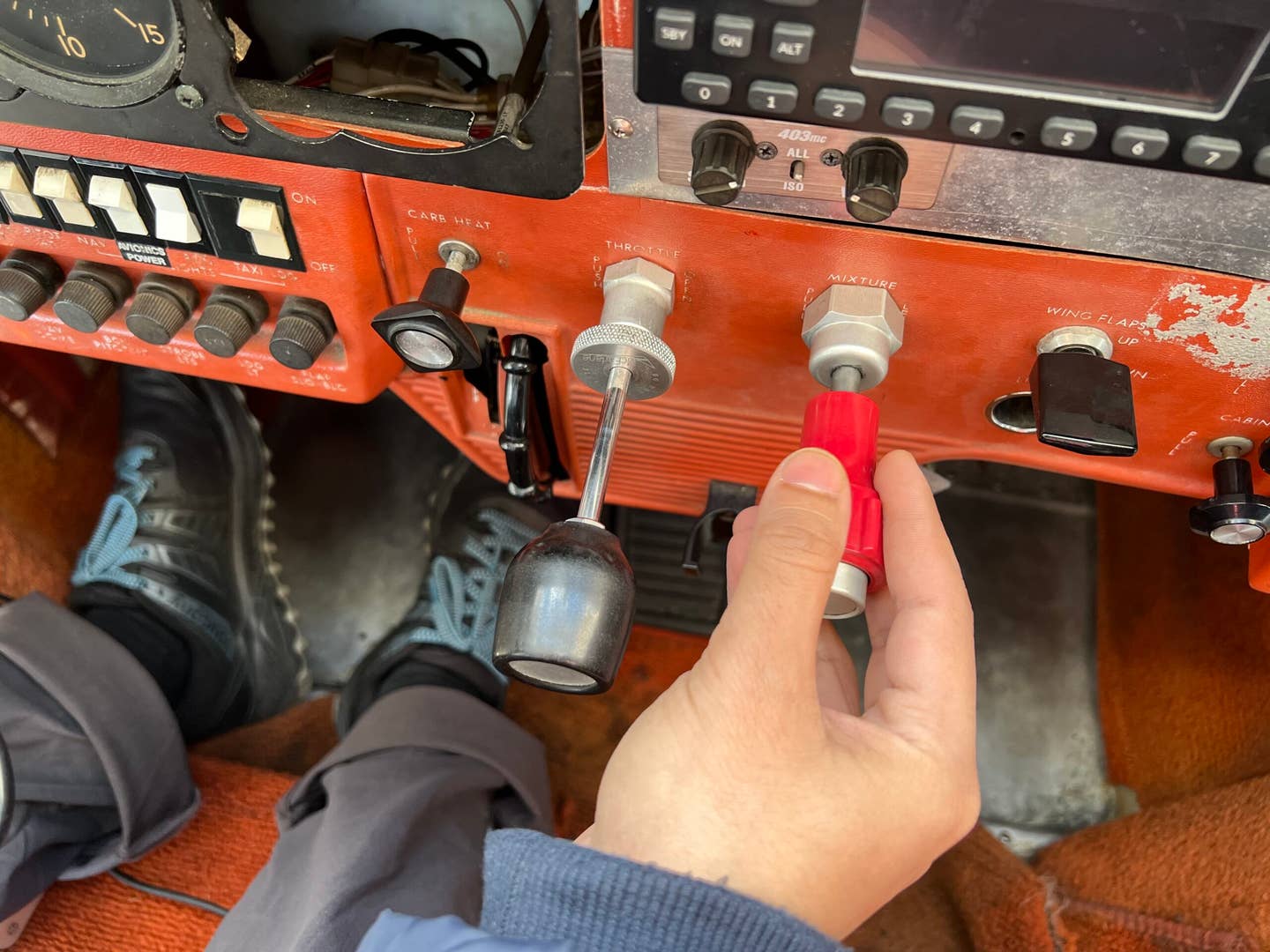How to Lean the Mixture for Better Fuel Economy
Student pilots are taught about proper leaning technique, but how does it really work?

When the cost of fuel comes out of your pocket, most people develop a vested interest in making that fuel supply last. [Photo: Meg Godlewski]
There is an old joke that copper wire was invented when two pilots found the same penny. Pilots are a notoriously frugal bunch, and as such, we are always on the lookout for ways to cut the cost of flying. Yet ironically, many pilots do not take advantage of leaning the mixture as a means to increase their fuel economy.
Student pilots are taught the definition of “leaning the mixture,” but sometimes they are not taught the practical application of it. This may be, in part, because aircraft are often rented “wet,” which means the renter pilot doesn't have to pay extra for the fuel. When the cost of fuel comes out of your pocket, most people develop a vested interest in making that fuel supply go for longer.
Why Lean?
The principle of leaning is to create the optimum ratio of fuel/air mixture for optimal engine performance. Properly leaning the fuel air mixture before taxi prevents spark plugs fouling with lead deposits. If you rent aircraft at an FBO, you’ll quickly learn which aircraft in the fleet are particularly prone to this.
More Time in the Air, Use Less Fuel
The performance metrics listed in the pilot’s operating handbook (POH) for performance, endurance, and range are often based on the aircraft using a leaned mixture. Make sure to read the fine print on those charts. The pilot who does not follow the instructions on the power settings and leaning may have performance numbers that are wildly different from what they expect, resulting in fuel mismanagement.
Some flight schools drill this home by insisting on a specific fuel-air mixture ratio for cross-country flights such as “all cross-country flights will be done using 60 percent power” as a means of economizing, saving fuel, and increasing the student pilot’s time in the aircraft.
How to Lean
Just as there are many ways for a pilot to brief an instrument approach, there are several techniques for adjusting the fuel air mixture.
To lean for best fuel economy during cruise flight:
- Set cruise power to the setting referenced in the cruise chart provided by the POH or aircraft flight manual (AFM).
- Reduce the mixture gradually until the engine begins to run a little rough. You may see a slight increase in engine rpm, and then there is a small loss of power, and the engine runs rough.
- Gently enrichen the mixture until the engine operation smooths out. This is what is known as “best economy” setting, which is a mixture that is rich of peak in a normally aspirated, carbureted engine.
Remember, if you need to climb, you should enrich the mixture, climb to the desired altitude, then repeat the leaning process.
Adjusting the fuel/air mixture at altitude in cruise flight means decreasing the fuel flow to the engine to compensate for the decreased air density at higher altitudes. The aircraft requires less fuel for proper engine operation as altitude is gained—just make sure you enrich the mixture before descending for landing, or you could inadvertently fuel-starve the engine, resulting in an unintended off-airport landing.
Leaning for Best Power
Sometimes you want to lean the fuel/air mixture for best power—a high density altitude situation, such as taking off from a remote mountain airstrip, is a good example. Before you release the brakes, you’ll want to set the engine to full power, then lean the mixture, watching the tachometer rise until it peaks. This is your best power setting, and it’s very useful for climbing over those hostile trees at the end of the runway. If you operate an airplane with a Garmin G1000 or other engine indication systems, such as a JP Instruments unit, you can use those tools to more precisely lean the mixture for various phases of flight.
Power vs. Economy
Remember, leaning for best power is like a sprint: It provides the aircraft with the most speed for a power setting, good for climbing out of canyons or getting someplace fast.
Leaning for best economy is more like running a marathon: It gives the aircraft a lower fuel flow at a particular power setting, and therefore more endurance.

Sign-up for newsletters & special offers!
Get the latest FLYING stories & special offers delivered directly to your inbox






